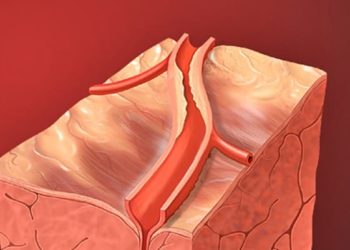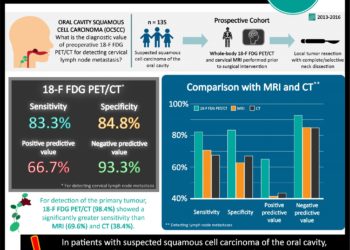Computed tomography improves diagnostic certainty in the emergency department
1. In a prospective survey of over 240 emergency physicians, the use of computed tomography (CT) scans in emergency department significantly altered the leading diagnoses between the pre-test and post-test state while increasing diagnostic certainty across a variety of patient presentations.
2. Changes in leading diagnoses occurred most frequently with chief complaints of abdominal pain, followed by complaints of chest pain or dyspnea and headache, respectively. These changes in leading diagnoses and diagnostic certainty were independent of emergency department location or individual clinician characteristics.
Evidence Rating Level: 2 (Good)
Study Rundown: Over the past 2 decades, the use of CT imaging in the emergency department (ED) has significantly increased. As such, there is a growing concern regarding the increased reliance on CT examinations among ED physicians, which may lead to excessive radiation exposure and increased health care costs. However, there has been a paucity of research examining how CT results affect the decision making process among ED physicians. The purpose of this prospective trial was to determine the effect of CT use on the ED physician’s diagnostic confidence, final diagnostic choices, and how that choice changed between the pre- and post-test state. This study surveyed over 240 ED physicians evaluating patients for common clinical indications for a CT scan (including abdominal pain, chest pain or dyspnea, or headache) and recorded the clinician’s leading diagnoses and self-rated degree of diagnostic certainty both before and after CT examination. At the conclusion of the study, the leading diagnosis was altered for 25%-50% of patients, depending on the specific indications, with changes most likely to occur in complaints of abdominal pain (51% change), and decreasingly less likely for chest pain or dyspnea (42%), or headache (24%). Furthermore, there was a variable level of diagnostic confidence prior to CT imaging, which improved by up to 25% across all indications post-CT, while also changing hospital admission decisions by up to 25%. Interestingly, specific provider characteristics, such as level of training, did not have an effect on the change in diagnoses or diagnostic uncertainty. The results of this study provide evidence that the current CT utilization practices do provide significant benefit to the ED physician through significant increases in diagnostic certainty, which affects hospital admissions and direct patient management. However, the study was limited by its observational design and lack of a control group that did not undergo imaging, resulting in an inability to control for confounding factors that may have influenced ED physician diagnostic certainty. The use of additional clinical decision tools to increase pre-CT diagnostic certainty may help to reduce total CT scan utilization while avoiding a sacrifice in the desired level of diagnostic certainty.
Click to read the study in Radiology
Relevant Reading: Abdominopelvic CT increases diagnostic certainty and guides management decisions: a prospective investigation of 584 patients in a large academic medical center
In-Depth [prospective cohort]: This study is a prospective, multi-center survey study of 245 ED physicians across four academic medical centers in the United States analyzing the effect of CT scan results on the diagnostic choices and diagnostic certainty in the emergency department. The survey was administered to physicians when a CT scan was ordered for one of three non-traumatic indications: abdominal pain, headache, and chest pain and/or shortness of breath. The clinician was asked to complete a pre- and post-CT scan survey, which evaluated each clinician’s leading diagnosis and confidence in their diagnosis. At the conclusion of the study, the leading diagnosis changed post-CT scan in 51% of patients with abdominal pain, 42% of patients with chest pain/dyspnea, and 24% of patients with headache. This resulted in a change in decisions to admit patients to the hospital in 25% of patients with abdominal pain, 19% of patients with chest pain/dyspnea, and 19% of patients with headache. Furthermore, there was an increase in the diagnostic certainty of 25%, 20%, and 13% for patients with abdominal pain, chest pain/dyspnea, and headache, respectively. The level of pre-CT diagnostic certainty was inversely correlated with the frequency of diagnostic changes (p < 0.0001). Finally, there was no significant effect of specific clinician or site characteristics on the frequency of diagnostic changes post-CT.
Image: CC/Wiki/Eyone
©2015 2 Minute Medicine, Inc. All rights reserved. No works may be reproduced without expressed written consent from 2 Minute Medicine, Inc. Inquire about licensing here. No article should be construed as medical advice and is not intended as such by the authors or by 2 Minute Medicine, Inc.







![Adverse pregnancy outcomes associated with thrombophilias [Classics Series]](https://www.2minutemedicine.com/wp-content/uploads/2015/07/Classics-2-Minute-Medicine-e1436017941513-75x75.png)